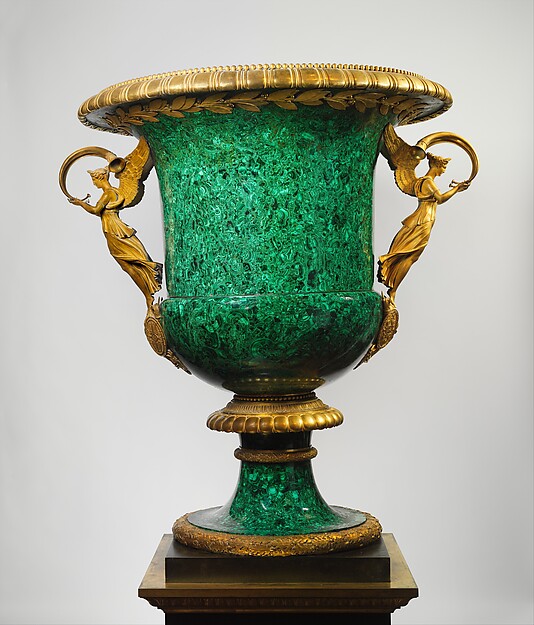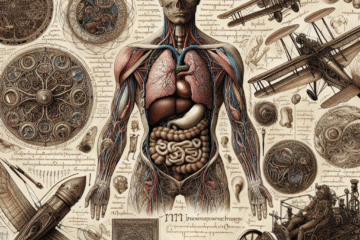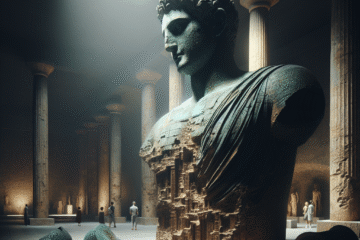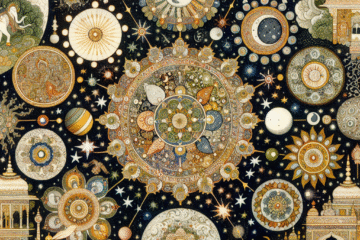
Image title: Monumental vase
Medium: Russian malachite, composite filling material; gilt-bronze mounts; bronze pedestal
Date: lapidary work: early 19th century; pedestal and mounts: 1819
Source:
The Met Collection
“
The art challenges the technology, and the technology inspires the art.
”
— John Lasseter
The Sculpted State: Monumental Art and the Politics of Power
Introduction: Stone as Sovereign Language
From towering pharaohs to steely-eyed revolutionaries carved in marble, monumental sculptures have long served as portals into the mindset of their makers. More than static adornments of public space, these colossi tell stories—carefully curated narratives of power, permanence, and cultural identity. Governments across millennia have harnessed the vocabulary of stone to project authority, silence dissent, and fuse collective memory with national ideology. This blog explores five epochs of visual propaganda through monumental sculpture, revealing the intersection of art and the architecture of influence.
Chapter 1: Eternal Authority in Ancient Egypt
In ancient Egypt, sculpture was not merely representational—it was metaphysical. Pharaohs weren’t just depicted as gods; in stone, they became gods. The Great Sphinx of Giza and the regal statues of Ramses II at Abu Simbel exemplify this ethos. These works were engineered to awe, their colossal scale reinforcing the divine nature of royal rulership. The material—the choice of hard, enduring stone such as granite—was a technological and spiritual investment in eternity. Hieroglyphs etched into the structures doubled as sacred text and propaganda, ensuring the ruler’s legacy would resist not only erosion but also historical revision.
Chapter 2: Imperial Idealism in Ancient Rome
The Romans adopted and evolved Greek sculptural traditions, injecting them with a political realism rooted in conquest and civic identity. The triumphal arches of Augustus and the imposing statue of Marcus Aurelius on horseback were not just decorative—they were declarations. These public sculptures positioned emperors as wise, virtuous, and ordained by divine order. More than personal glorification, they enshrined the Roman state’s claim to control time itself, as many bases included detailed reliefs that chronicled historical events, victories, and rituals intended to define the collective Roman experience.
Chapter 3: Gothic Grandeur and Divine Kingship in Medieval Europe
While sculpture in the Middle Ages often deferred to religious themes, it still played a central role in the political imagination. Cathedral facades were populated with sculpted kings, saints, and biblical figures that blended sacred and sovereign authority. In France, the Royal Portal of Chartres Cathedral displays Old Testament kings and queens alongside Christian figures, aligning divine legitimacy with earthly monarchy. The relationship between the Catholic Church and medieval monarchs was mutually reinforcing, and sculpture became an instrument of divine right—as visible in the stone effigies found on church walls and tombs.
Chapter 4: Revolutionary Icons and Soviet Modernism
The 20th century heralded a seismic shift in sculptural politics, epitomized by the Soviet Union’s deployment of monumental art as ideological machinery. Sculptors like Vera Mukhina produced epic statues such as “Worker and Kolkhoz Woman” (1937), where heroic realism and industrial symbolism converged. These towering forms embodied the communist ideal: unity, labor, and forward momentum. Stalinist architecture often included massive statues and reliefs erected in plazas, reinforcing the omnipresence of the state. Unlike classical sculpture which codified the past, Soviet monumentalism was about shaping the future—an enduring revolution etched in concrete and steel.
Chapter 5: Modern Democracies and the Illusion of Neutrality
In contemporary democratic contexts, monumental sculpture remains controversial precisely because of its political inertia. Statues of Confederate generals in the United States or colonial figures in the UK and Belgium have come under intense scrutiny. These monuments, once installed to signal unity or pride, are now viewed as instruments of exclusion and historical distortion. The recent toppling or relocation of such statues reveals a dramatic re-engagement with public art as contested space. Meanwhile, counter-monuments—often abstract, ephemeral, or participatory—aim to resist dominant narratives rather than enshrine them. This modern turn reflects a philosophical shift: stone is no longer neutral; it speaks, and the public has begun to talk back.
Conclusion: From Silence to Dialogue
Monumental sculptures are never just about stone; they are about stories—those told, those silenced, and those yet to be told. Across time, from centralized empires to populist democracies, these works have channeled the ambitions and anxieties of nations. As technologies evolve—from marble chisel to data-driven design—so too does the sculpted state’s capacity for shaping the public sphere. In this ever-shifting interplay between art and power, sculpture remains a battleground of memory, identity, and vision for the future.

Image description:
Worm’s-eye view of the Buddha of Ibiraçu, Espírito Santo, Brazil.
License:
CC0
Source:
Wikimedia Commons
Useful links:


